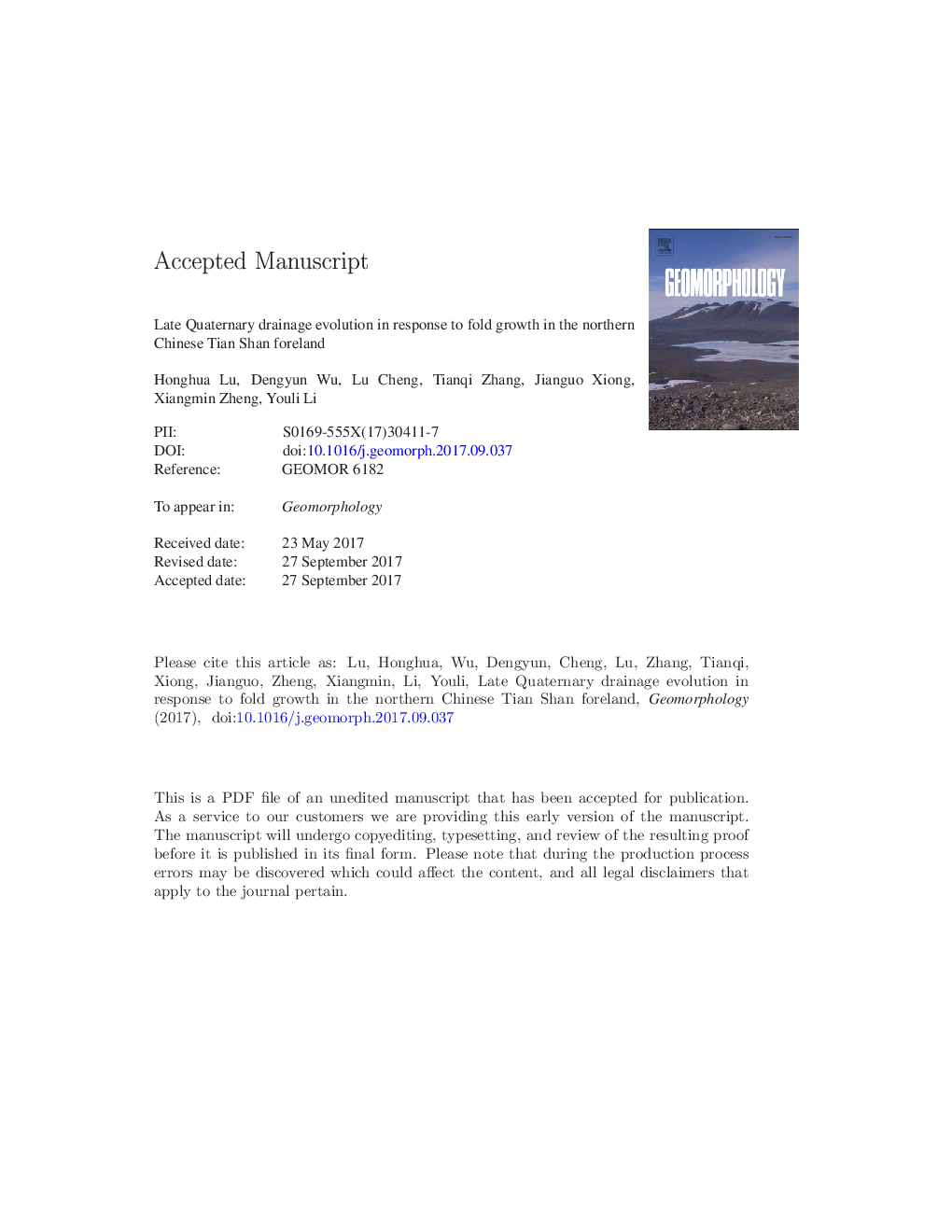| Article ID | Journal | Published Year | Pages | File Type |
|---|---|---|---|---|
| 5780697 | Geomorphology | 2017 | 36 Pages |
Abstract
Alluvial units are important in understanding the interactions of antecedent drainage evolution with fold growth along the flanks of active orogenic belts. This is demonstrated by the Anjihai River in the northern Chinese Tian Shan foreland, which at present flows northward cutting sequentially through the Nananjihai anticline, the Huoerguos anticline, and the Anjihai anticline. Three episodes of alluviation designated as fans Fa, Fb, and Fc are identified for the Anjihai River. These three alluvial terrain features comprise a series of terraces, where the topographic characteristics, geomorphologic structure, and up-warped longitudinal profiles indicate continuous uplift and lateral propagation of the Halaande anticline and the Anjihai anticline over the past 50Â ky. Shortly after ~Â 3.6Â ka when the oldest terrace during the period of the fan Fb sedimentation was formed, significant rock uplift at the overlapping zone of the Anjihai anticline and the Halaande anticline led to the eastward deflection of the antecedent Anjihai River. A series of local terraces with elevation decreasing eastward indicate the gradual eastward migration of the channel of the Anjihai River during the period of the fan Fc sedimentation. Finally the Anjihai River occupied the previous course of the Jingou River when the latter was deflected eastward in response to rock uplift of the Anjihai anticline, presently flowing across the eastern tip of the Anjihai anticline.
Keywords
Related Topics
Physical Sciences and Engineering
Earth and Planetary Sciences
Earth-Surface Processes
Authors
Honghua Lu, Dengyun Wu, Lu Cheng, Tianqi Zhang, Jianguo Xiong, Xiangmin Zheng, Youli Li,
